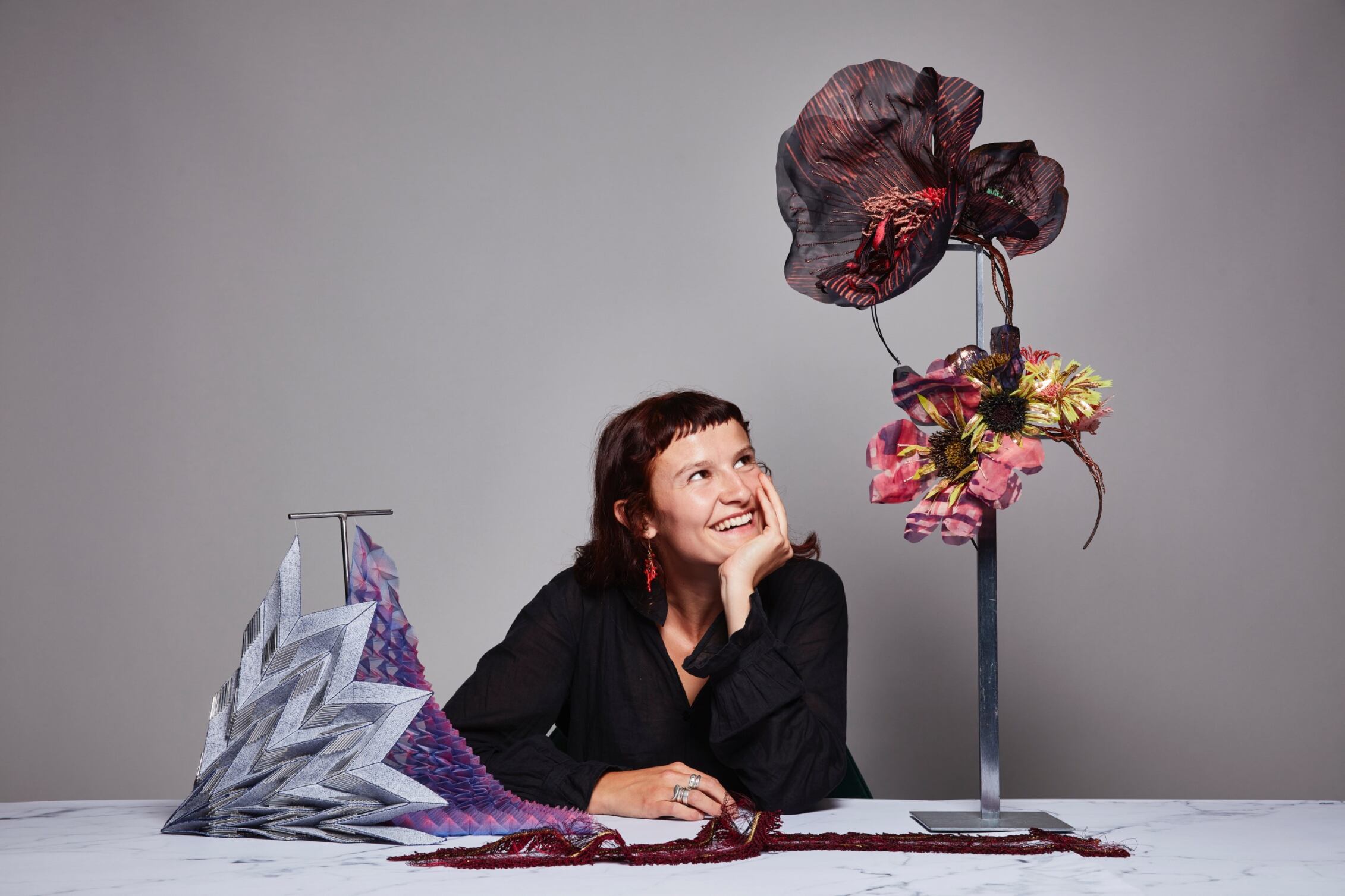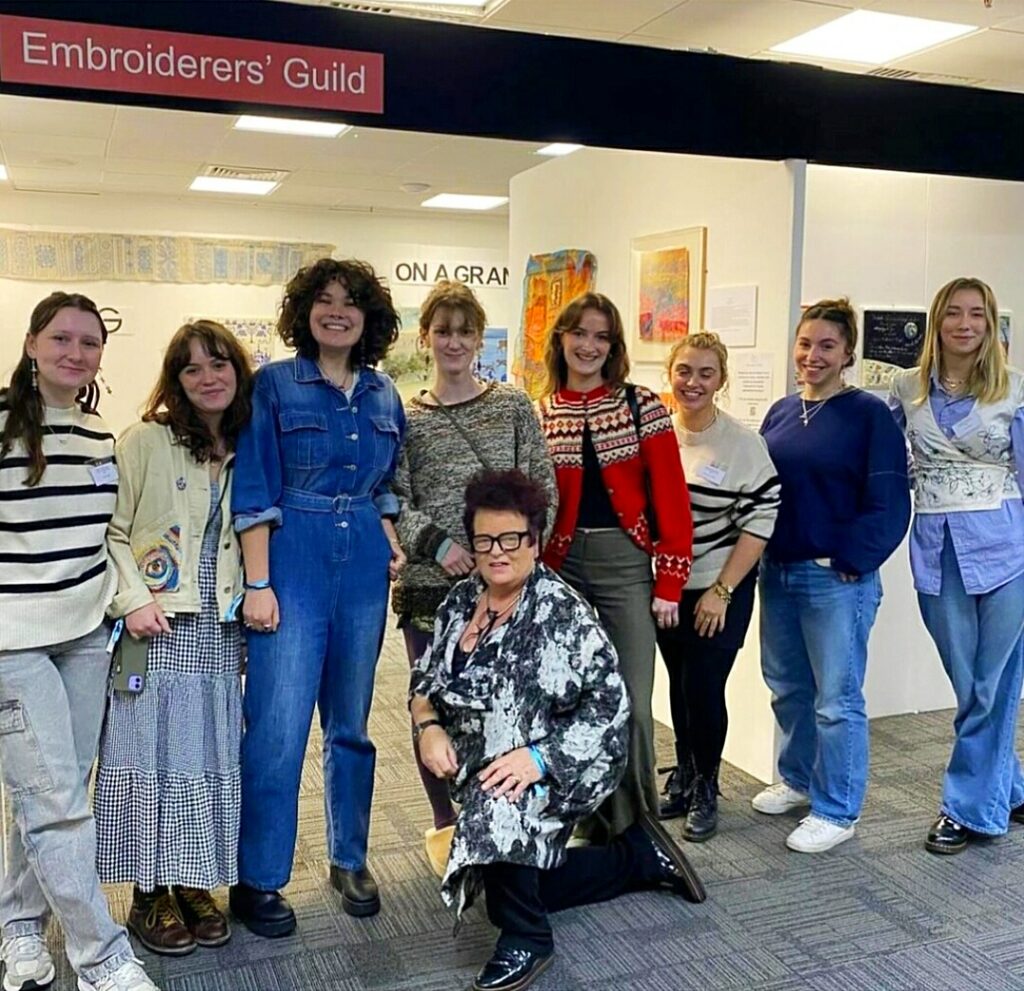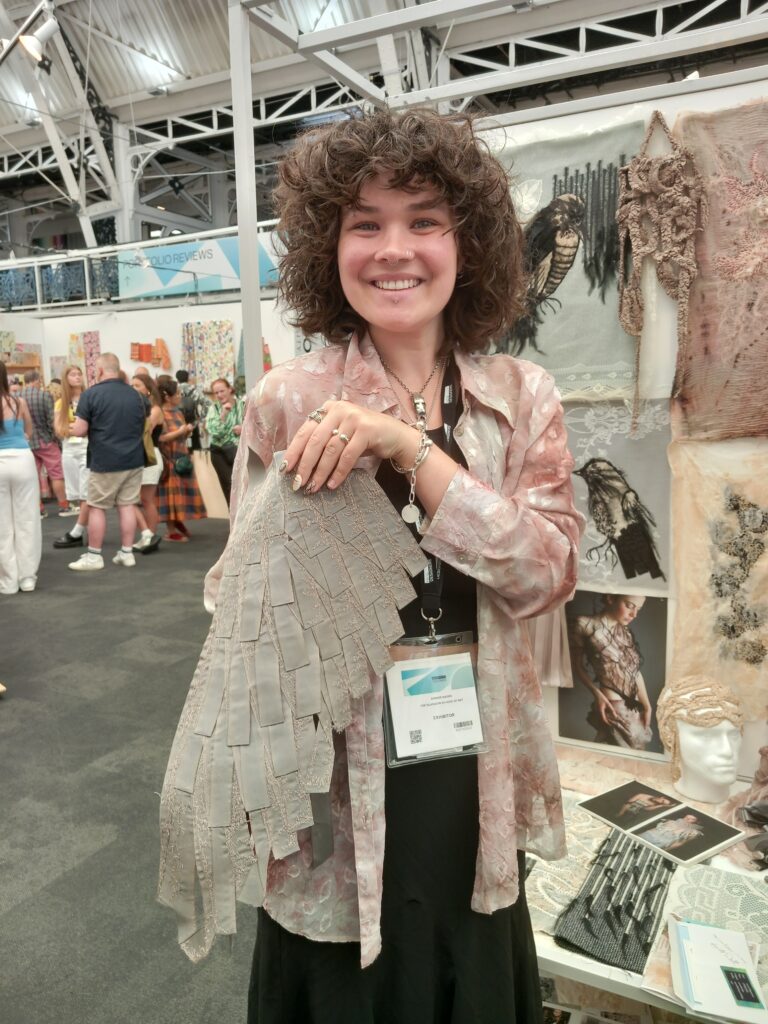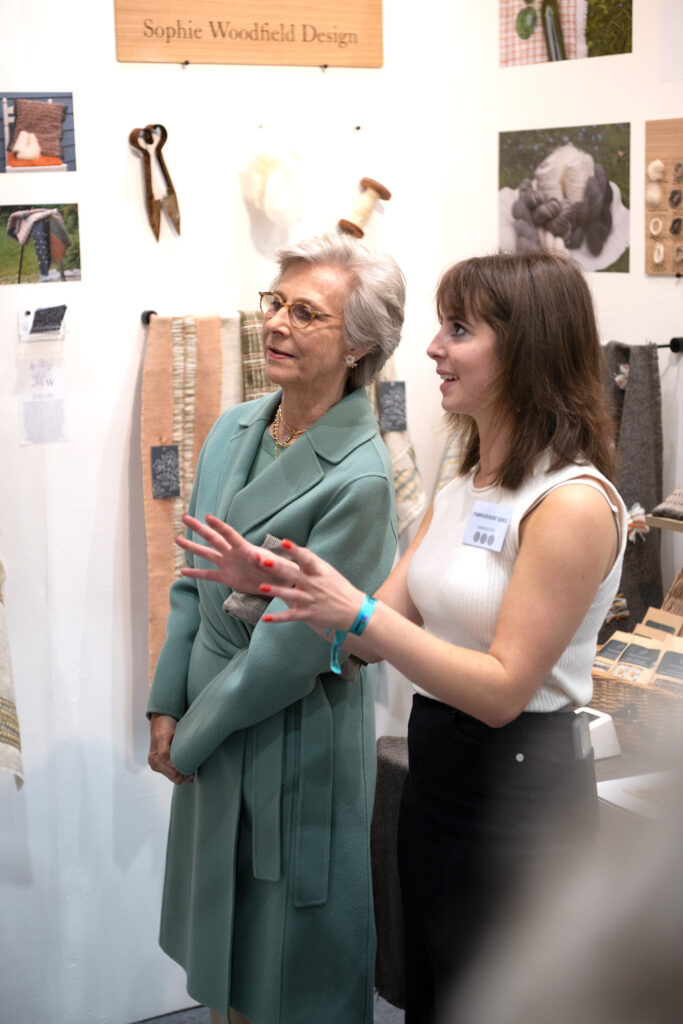
Featured: Beth Sommerville, Guild Graduate in 2023
For over 30 years the Embroiderers’ Guild have partnered with Immediate Live, the organiser of the fabulous Knit+Stitch Shows, to exhibit and celebrate across the UK the very best emerging new talent in the textile art world.
The benefits for graduates to showcase their work at the Knit+Stitch Shows cannot be under estimated. Exhibiting at two venues, Alexandra Palace in London and the Convention Centre in Harrogate exposes their talent to tens of thousands of enthusiastic craftspeople. They meet students, Guild members, teachers, artists, members from the industry, journalists, and commissioners. Where else would they be exposed to such a cross-section and be exposed to so many networking opportunities?
The Graduate Showcase selection process is managed by the Embroiderers’ Guild and takes place June-July each year at appropriate Final Year exhibitions and The New Designers Show held at The Business Design Centre in London. It is not possible for the selection committee, all of whom are volunteers, to visit all the shows, so they concentrate on visiting New Designers where the majority of colleges present their best students. Selected textile artists are assigned to colleges that are not represented, and they are asked to provisionally accept students who send a small selection of representative photographs electronically to the Chair of the selection committee. A final selection takes place, and the finalists are invited formally by the Embroiderers’ Guild and then Immediate Live commit to exhibiting. Graduates are selected on the basis of their work, their communication skills, their motivation, their design processes and ideas and their willingness to become an ambassador for the Guild.

‘We love to play a part helping young talented embroiderers and textile artists develop their careers and it’s always a thrill to support them in exhibiting their work at the Knit & Stitch Shows’
Anthea Godfrey – Guild Artistic Director
Graduates are expected to exhibit at both London and Harrogate. This great opportunity would usually cost them a great deal of money. The space, lighting and staging are provided free by Immediate Live, whilst the Embroiderers’ Guild provide a grant towards travel to the venues and accommodation with any balance funded by the graduates themselves. The Embroiderers’ Guild provide coaching and valuable advice based on decades of experience to ensure that each graduate showcases their work to best advantage in a way that is attractive and inspiring for show visitors.
To help the selected graduates make the most of the Showcase opportunity and help launch their career in embroidery and textile art the Embroiderers’ Guild provide a support package worth over £500 per Showcase graduate which includes:
- £125 grant towards travel, accommodation & incidentals
- Features in Embroidery the world’s leading textile art magazine, Guild website, newsletters and social media
- Opportunity to participate on a paid basis in the Guild’s annual event programme providing an online workshop or demonstration (after suitable coaching received)
- Opportunity to access over 1 year business advice to the value of £250. The advice is wide ranging from 5-6 small organisations/experts covering: website & retail, marketing & networking, online course creation, creating podcasts, costing your work, being self-employed, photography
- 1 year print plus archive subscription to Embroidery magazine (value £51.99). The magazine archive contains all 93 years back issues plus each current issue.
- 1 year Guild membership (value £42). This includes access to 7 free on-demand workshops, discounted tickets for live online workshops plus the opportunity to exhibit work with the Guild
- Copy of Showcase book: 30 years of Graduates & Scholars Showcase (value £35)
‘this enhanced offer is amazing and we hope students will really benefit from this great package’.
Anna Baptiste – Knit+Stitch Event Director



